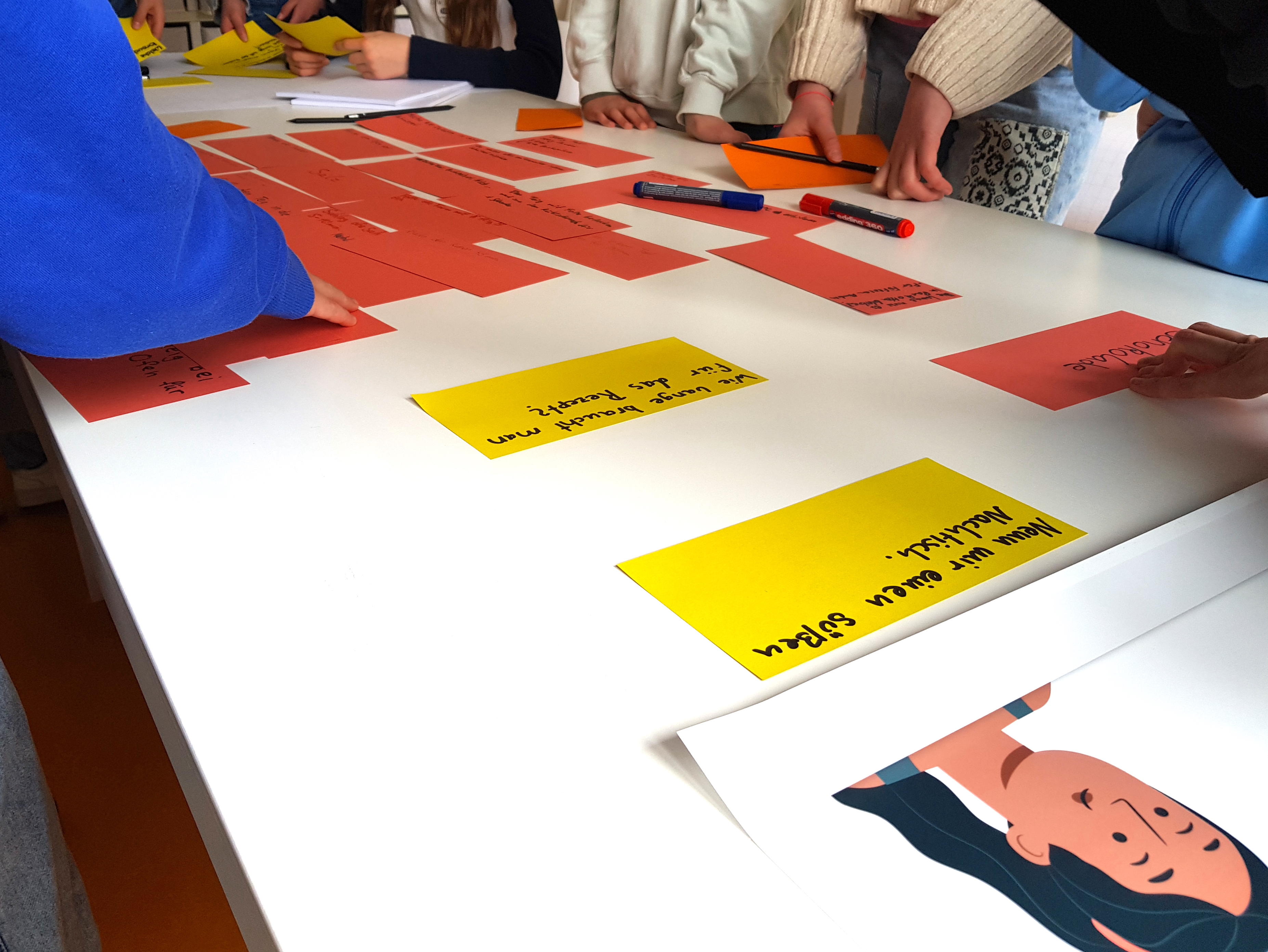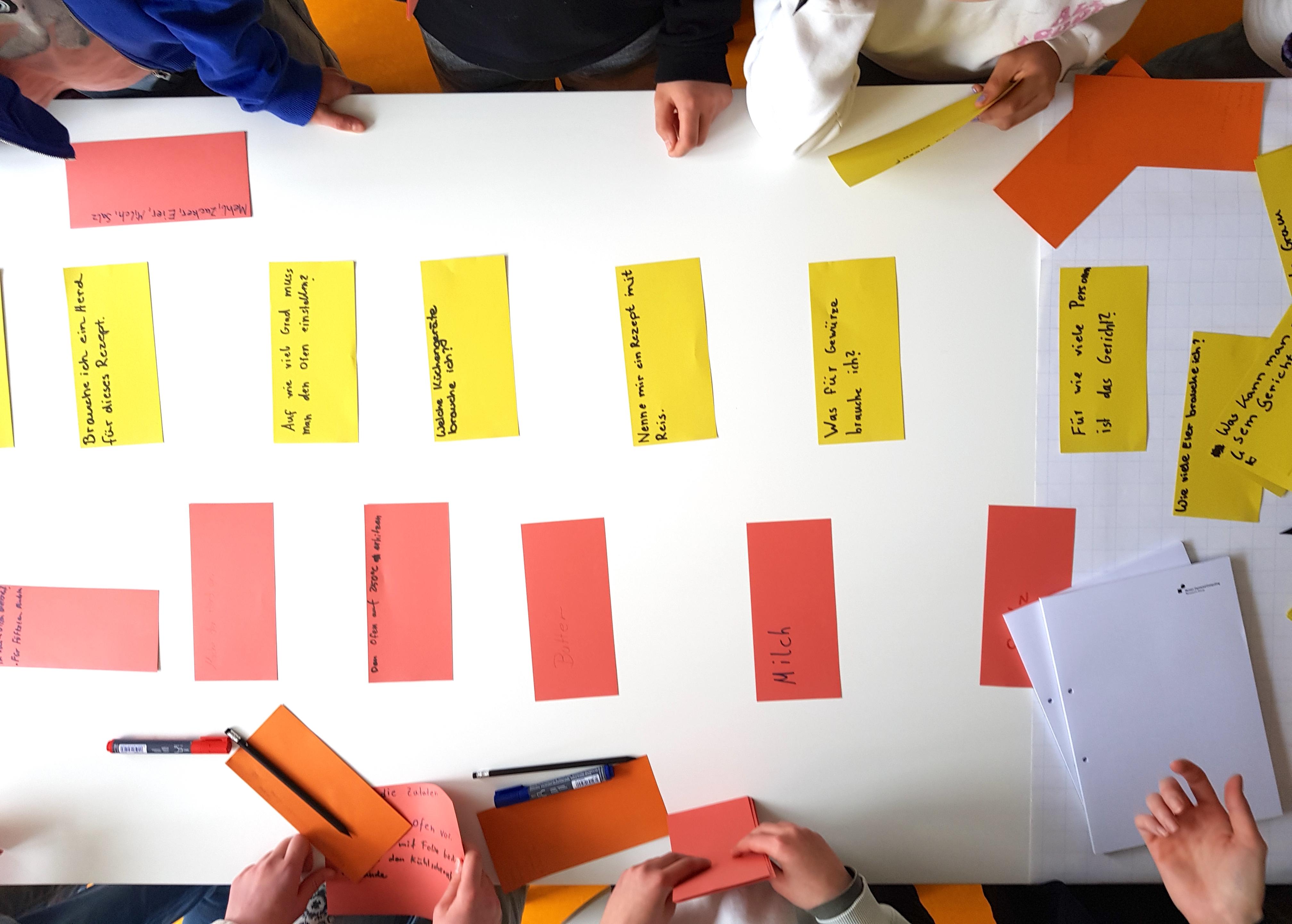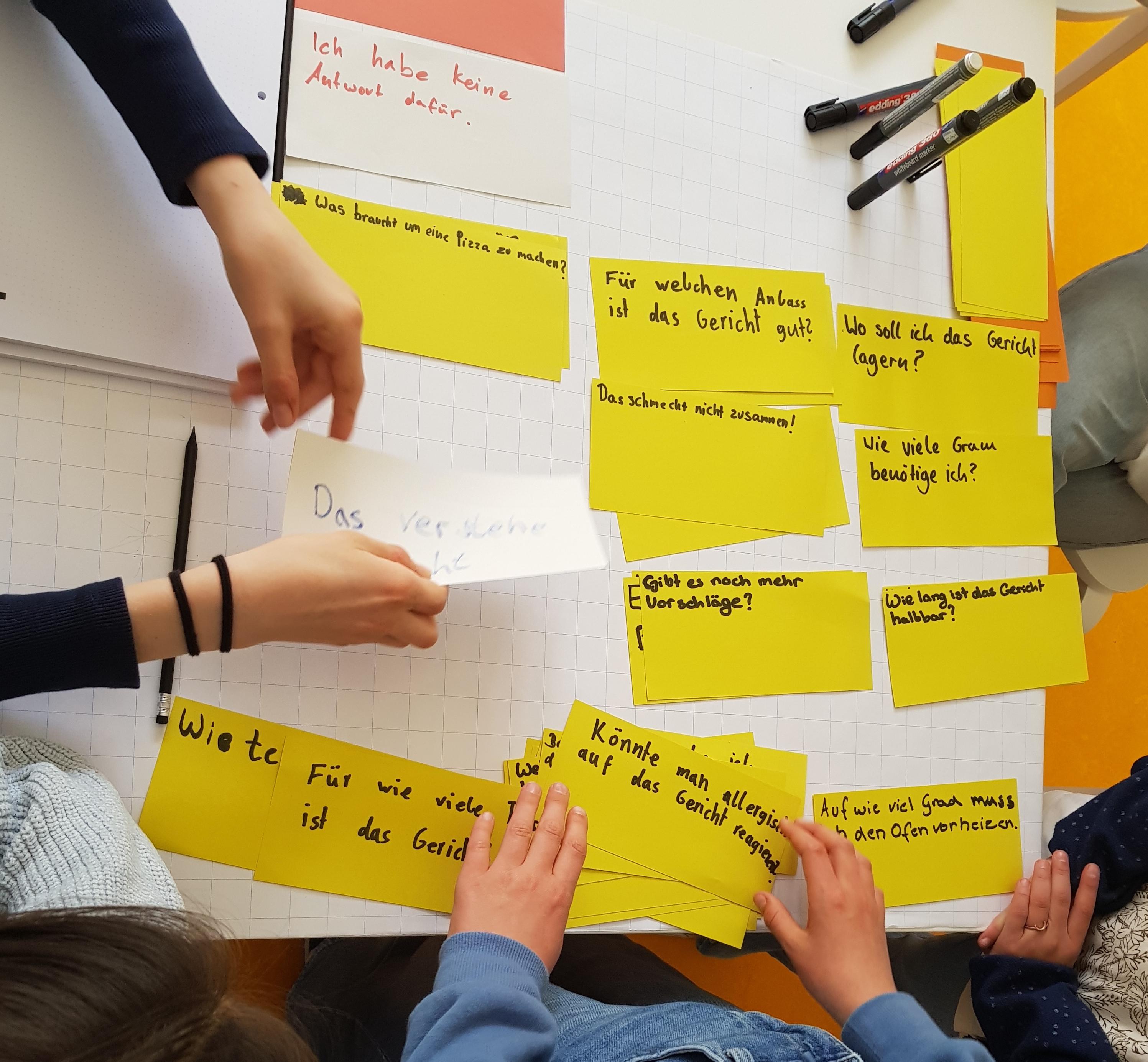Girls' Day 2024 at the HCC
News from May 03, 2024
On April 25, 2024, we were again part of the Girls’ Day.
The Girls’ Day is an in-person a nationwide event to show career and study options specifically for girls. Many universities, companies and businesses all over Germany participated to introduce interested pupils to science, technology and many other subjects. For your interest, this format also exists for boys as the Boy’s Day, which focuses on career paths in which the proportion of men is lower.
The FU Berlin participated with many workshops to show which professions or fields of study may be interesting for girls. The topics mainly focused on fields in which the proportion of women is less than 40 percent. We, the Human-Centred Computing Group, participated with a workshop focusing on chatbots and virtual assistance "Hey Siri, how do I cook my favorite dish?", a format which we iteratively improved over time.
The goal of our workshop was to let the girls learn, how much effort and thought the creation of chatbots require. We started by asking the girls what they thought of when they hear the words “chatbot” or “virtual assistance”. This year, many girls knew what Siri, Alexa, and even ChatGPT were. They knew that you can ask Siri to turn on the lights, and some even mentioned, that Siri kind of is like a human. We built on these first impressions and later explained, that chatbots may seem really intelligent, but they do not really know what they are saying. Before explaining this, we briefly showed them examples of chatbot from our past, like ELIZA, which may seem fascinating at first, but they quickly noticed, that ELIZA was not very helpful when you interact like you would with a human. If you tell ELIZA, that you do not know what to do, the answer is, that the bot asks you, what you want to hear. This did not seem very helpful.

After a short break, we started to “develop” our recipe chatbot. Half of the girls were given the task to think about what users might want to ask a chatbot when they want to cook or bake. The other half had the difficult task of imagining what questions could be asked. We later explained to them, that what we were doing is called “Wizard-of-Oz” approach, which helps to think about such interactions and what a tool needs to be able to do. One girl happily explained that she knew this from the "Wizard of Oz" story, and that we were doing something very similar - pretending to be a (ro)bot.
The first round was the hardest. But with a bit of help, they came up with a lot of questions and answers. To see, how well both teams ideas worked together, we played it through. The user group started asking for a specific recipe with rice, if an oven was needed, and for recipe recommendations in general. When asking for a sweet dessert, the chatbot group had chocolate already written down. But the rice dish question turned out to be difficult. Neither vanilla pudding nor chocolate has rice in it, our first chatbot did not have a yes or no. Which was fun, but not really helpful if you really want a to cook. This training phase, showed that developing a chatbot requires an understanding of how such a dialog works and needs to have a lot of data. What if the user group asks for something really difficult?

In the second round, both groups added many question, most useful the chatbot group added “Hä?” for emergencies and the very useful answer “yes”, “no” and “Please repeat what you want.”. The chatbot even started being polite by saying “Hello”. The user group noticed that there are more questions they would like to know ”Where can I get that from?”. Fortunately, the chatbot group had the answer “everywhere”, which may not be specific or correct, but at least it sounded good. Even a variety of rice dishes were added, such as sushi and rice pudding. Still, we founf that it is really difficult to prepare enough answers.

In the last two rounds the girls grouped the questions and answers and found that they had many ideas for ingredients or questions about what tools to use and how long the cake needs in the oven. This showed them, that there were categories they ahd unknowingly created in both groups. The user group had questions about what you need to make a dish, and the chatbot group had a collection of ingredients. We then explained that in order to get all the answers, the chatbot could learn to look things up. For example, the question about where to buy something could be answered by having the chatbot look up nearby stores.
Due to the time limit, we wrapped it up by summarising what we did and asking them what they wished for or liked. Most of them said they really liked the pretend game. Some suggested to let them really create a chatbot. Maybe this would be a good format for middle school students, the interest is clearly there.
We enjoyed learning with and from the students and hope that some of them developed an interest in computer science or similar fields of study. Hopefully, we will see some of them at the "Lange Nacht der WIssenschaften 2024".
Written by Ulrike Schäfer
Workshop of Ulrike Schäfer with Diane Linke and Philipp Harlos
